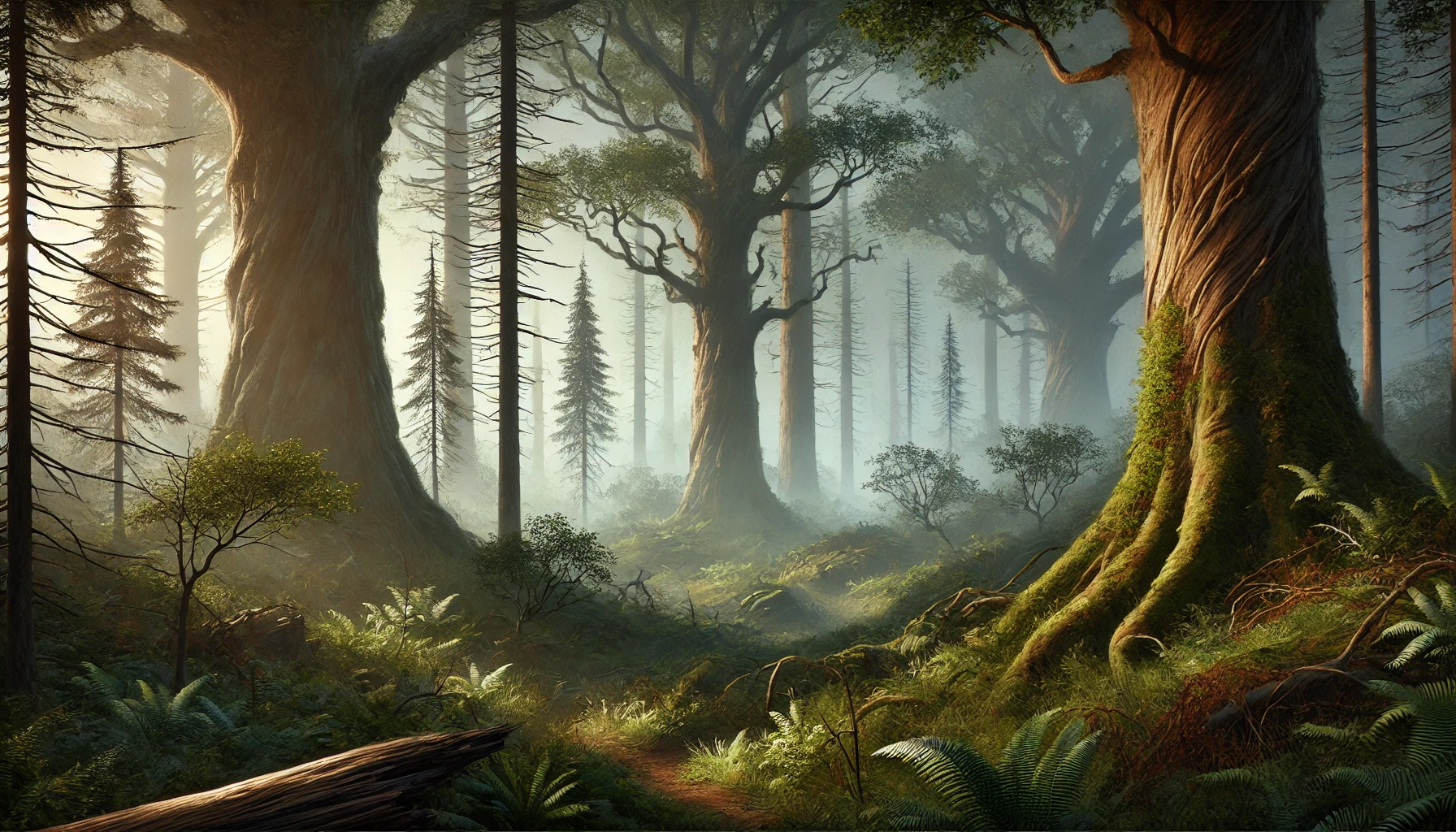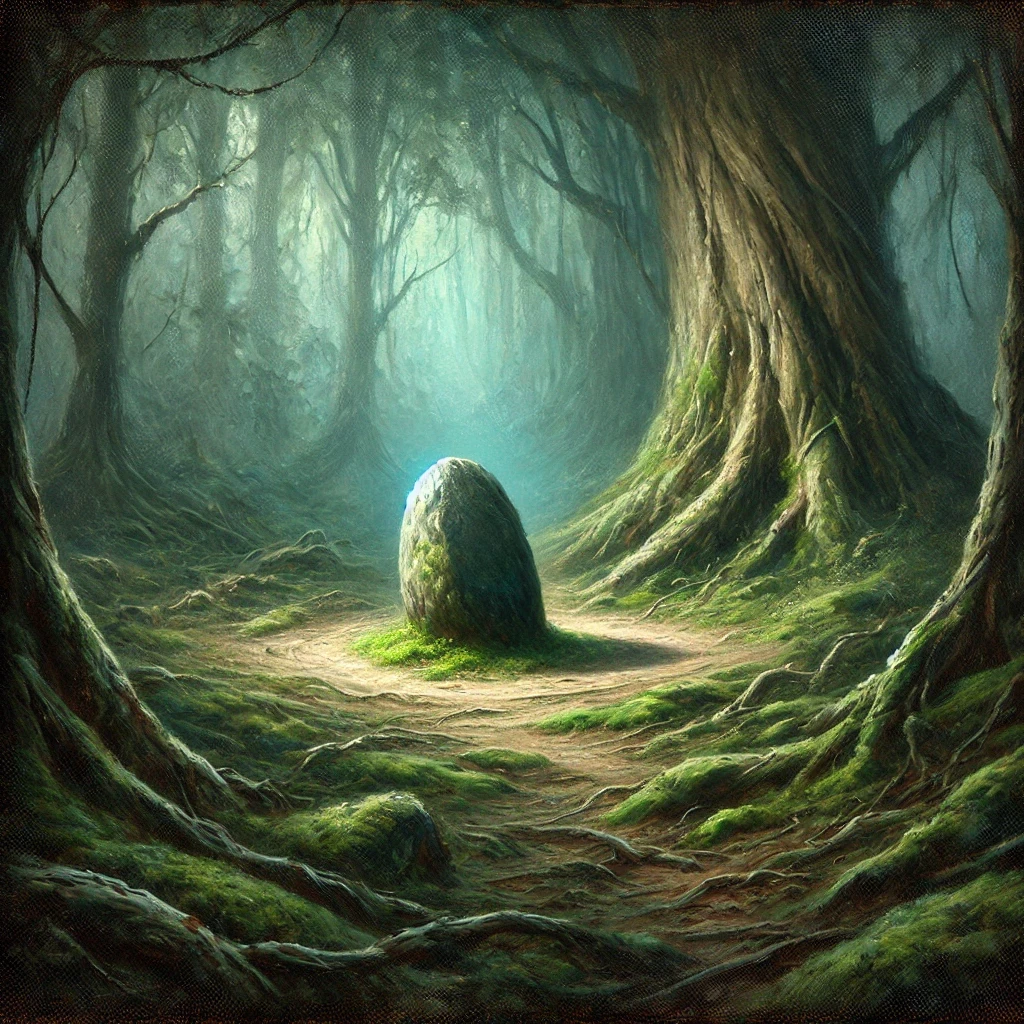Mystwood
Where the Forest Watches Back
Nestled in the shadowed lowlands of the central continent, Mystwood stands apart—not through size or danger, but through the weight of presence. From the first days of human exploration in the early Fourth Age, the forest has carried with it a quiet gravity, a sense that it is not merely land to be walked, but an entity to be acknowledged.
Though civilization now presses closer—roads winding around its edges, villages dotting nearby hills—Mystwood remains largely untouched. It is not forbidding, nor hostile. Yet those who live nearby rarely wander far beyond its outer trails. Not out of fear—but out of respect.
The forest is temperate, its trees older than the memory of kings. Mists drift among trunks in the early morning, and certain glades never seem to change, no matter the season. Its undergrowth is thick but not impenetrable, and many have foraged in its outer reaches for herbs or game without event. But deeper within, strange things begin to occur.
Loggers tell of axes that refuse to strike certain trees, no matter the strength of the swing. Prospectors speak of veins of ore that vanish and reappear, or glimmer faintly with hues no forge can reproduce. These accounts are never told with dread—but with a kind of reverence, as though the forest itself chooses when and how it wishes to be used.
Mystwood is not a place of terror. It is a place of mystery. A forest that watches, remembers, and perhaps even guides. Those who enter with respect find their way through, changed in subtle ways. Those who seek to dominate it often find themselves walking in circles, with the forest subtly, gently, refusing them passage.
It is not a wild frontier. It is a quiet guardian—one that still holds the old magic close beneath its roots.



Comments